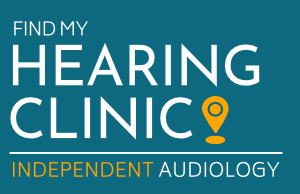How to Get Water Out of Your Ears

It is that time of year when the weather is warming up, which leads to an increase in water-based activities. This can result in getting water stuck on your ears. Water gets stuck in your ears for multiple reasons, it might be getting stuck behind wax in your ears, or you might have narrow or windy ear canals that the water can get stuck in. The surface tension of the water can cause a seal which prevents the water from draining out. Once the water is stuck it reduces your hearing and makes your ear feel blocked. Also, having water sitting in your ears for a prolonged period can cause infections. Wearing earplugs can prevent water getting stuck in your ears by stopping it getting in there in the first instance. However, if you do get water stuck in your ears, there are several things you can try to get it out.
Things You Can Do to Get Water Out of Your Ears.
1. Pull on your earlobe. Pulling on your earlobe moves the water around and can break the surface tension. This can help it drain out.
2. Tip your head on the side or lie on your side. Again, this can help move the water around so that the surface tension breaks, and it comes out. It also allows gravity to help you get it out by pointing the ear in the direction you want the water to go.
3. Yawn or chew on food. Your ear canal and jaw are connected in that moving your jaw changes the shape of your ear canal. For this reason, chewing, yawning, or moving your jaw can change the shape of your ear canal and help the water come out.
4. Use an ear dryer. Yes, there is such a thing – these work how you would expect, they blow warm air into your ear to help the water evaporate.
5. Use over the counter eardrops. There are a few different brands of ear drops available that can help the water dry out in your ears. Generally, these use isopropyl alcohol to help the water evaporate. While these are safe for most people to use and are quite effective, they should not be used by anyone who does not have an intact eardrum. This includes adults or children with ventilation tubes (grommets) in their ears or anyone who has or has had a perforation (hole) in their eardrum that has not been confirmed to have healed over. The eardrum acts as a barrier to keep the drops in the ear canal, if the ear drum is not intact then the drops can go further into the middle part of the ear where it should not be going.
6. See your hearing care professional. Your hearing care professional can use micro-suction to remove the water, and any earwax that might be trapping it in your ear canal. This is a quick and effective way to remove stubborn water. By looking in your ear, they can also identify if it is in fact water causing the problem or whether something else is going on.
Things NOT to do.
Do NOT poke things down your ears to break the surface tension or absorb the water. This includes anything like pins, bobby pins, or cotton buds. These can damage your ear canal and your eardrum causing ongoing problems for your ear and hearing.
Ways to Prevent Water Getting into Your Ears.
The easiest way to get water out of your ears is by stopping it getting into your ears in the first place. This is especially important for anyone who has ventilation tubes in their ears or who has a perforation of their eardrum. You can stop water getting into your ears by using ear plugs. There are lots of different options available.
Over the counter earplugs can come in the form of pre-moulded earplugs, or putty that you soften up and shape over the entrance to your ear canal. These can work well for some people but may be fiddly and not secure enough for everyone.
Custom-made plugs can be made to fit your ears specifically. This involves seeing a hearing care professional who takes an impression (shape) of your ear. The custom plugs are then made in a laboratory using the shape of your ear. These tend to be more secure than custom made earplugs. However, ears do grow as children grow, so keep an eye on the fit of your child’s custom-made earplugs if they have a growth spurt.
Enjoy your water sports in the warmer weather, these can be a lot of fun. However, if you get water stuck in your ears, follow the steps above to get it out. If you prefer to avoid getting water in your ears, consider investing in some earplugs.
If you are having trouble with water getting in your ears, or your child’s ears, or would like to get some custom-made earplugs, the best place to start is to book an appointment with your local independent hearing clinic. By seeing your local independent hearing clinic, not only can you be sure you will receive the best independent advice for your needs, but you are also supporting a business within your local community.
You can find your local independent hearing clinic, through Find My Hearing Clinic – Clinic Locator
